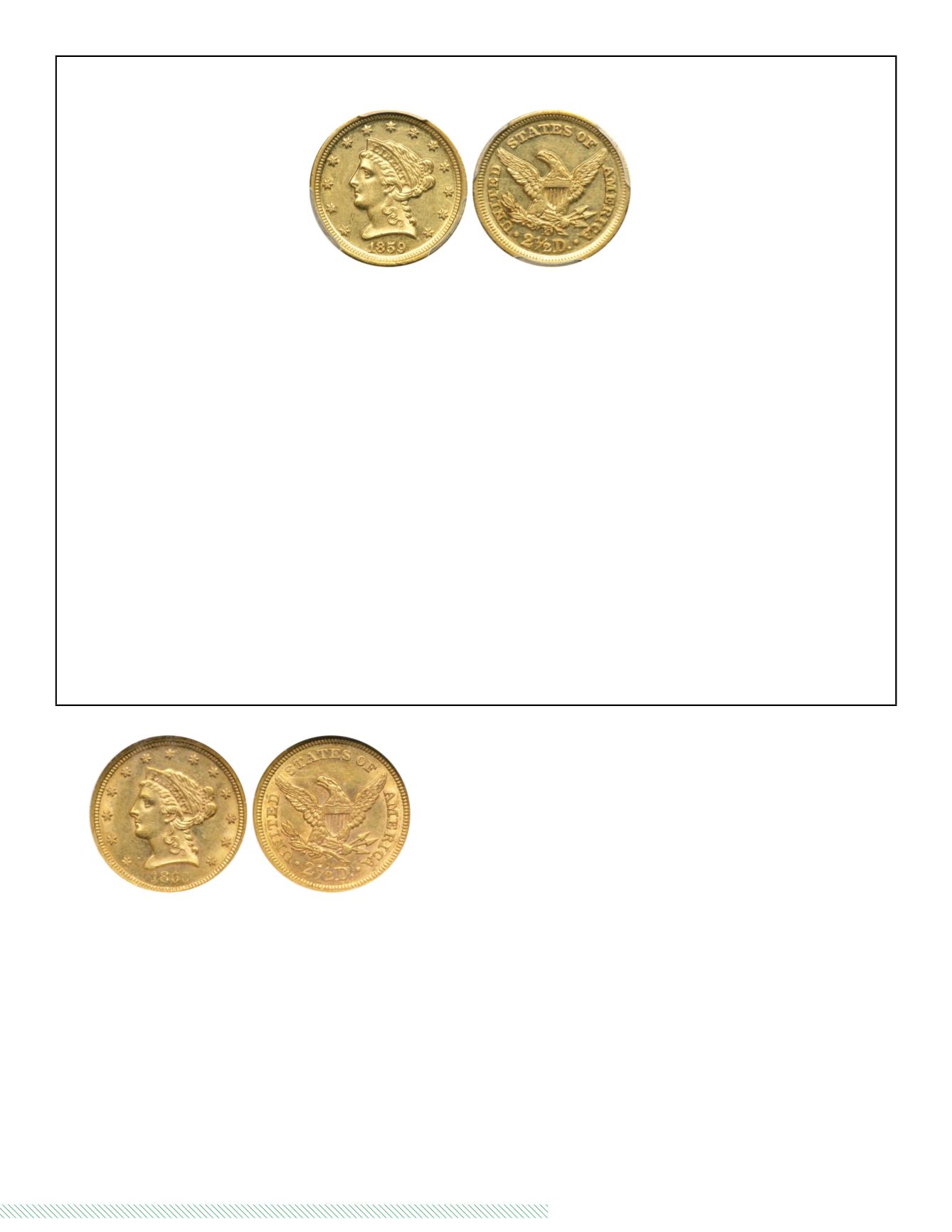
1
253
bid online at
(800) 978-COIN (2646)
|
Session Four - Tuesday, June 3, 2014 6:00 PM
M
INT
S
TATE
1859-D $2.50 L
IBERTY
Enlargement
1696
1859-D
.
PCGS graded MS-61
. Mostly untoned with luster evident on both sides. An exceptional specimen, a Condition Census piece with
many fine attributes. First of all, the grade is quite high in a period in our history where most gold coins reached circulation, MS61, which
ranks it near the top echelon. Further, and perhaps equally important, the coin has a far above average strike. Specialist Harry Bass when he
was alive, made detail notes that the dentils were rarely separated and distinguishable on 1859-D quarter eagles, this being much superior
than the typical coin. Last and worthiest, the piece has a beautiful overall aesthetic appeal -- a splendid specimen.
Only, 2,244 were struck, and of this number probably not more than 100 to 200 may yet survive. Obverse die notably basined. Logotype is
quite low, close to the dentils.
On the reverse the D mintmark is deeply impressed into the die and high, with the feather details occupying the upper left 50% of the center.
The die used must have been boldly impressed from the master die, since the letters and other features are prominent.
Pop 3; 5 finer in 62
.
(
PCGS # 7789
)
Why such a low mintage in 1859 at the Dahlonega Mint? The discovery of gold in California in 1848 played a significant role in the history of
this Southern coin manufacturing plant. The miners brought back gold from California, which they deposited at the Dahlonega Mint, begin-
ning in 1850. By 1851 these deposits exceeded that of locally mined Georgia gold. Deposits from California peaked in 1853, amounting to
almost 80 percent of the year's receipts.
Although deposits in 1854 were down significantly from 1853, due primarily to the opening of the San Francisco Mint (that was much more
convenient to the California gold fields), the Dahlonega Mint managed to coin four denominations (dollar, quarter eagle, three dollar, and half
eagle), for the first (and only) time in its history.
Receipts at the Georgia mint continued to decline into the late 1850s, after the California gold deposits had slowed to a trickle. There was
some hope of increasing deposits brought about by several events, including the Findlay Chute discovery in 1857 and the prospects for
hydraulic mining by the Yahoola Company in 1859, but history in the form of a Civil War was waiting to intercede.
Estimated Value ........................................................................................................................................................... $25,000 - 26,000
Enlargement
1697
1860. Type 1
.
NGC graded MS-61
. Only 22,563 struck. Lus-
trous fields and devices.
Pop 6; 3 finer, 2 in 62, 1 in 63.
Estimated Value ..............................................$1,000 - 1,100


